Discover a Historical Dutch City
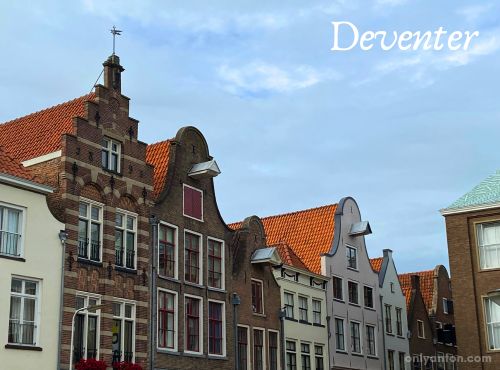
Introduction
This is a travel guide to an underrated gem in the eastern Netherlands: Deventer. It is a destination that quietly rewards the curious traveller. With its cobbled streets, medieval buildings, and deep cultural roots, Deventer offers a distinctly Dutch experience that remains blissfully off most tourist itineraries. Here, the past lingers not only in its architecture but also in its traditions, food, and scholarly legacy. For those seeking something beyond Amsterdam’s canals or Utrecht’s bustle, Deventer is a historic Dutch city well worth discovering.
I arrived in Deventer in August 2023 as a short stopover before beginning Dutch language lessons in Drenthe. My goal was simple: see a new city, sample the famous Deventer koek, and visit a place once frequented by Erasmus himself. I booked a room at Hotel in het Huis van Deventer. Only later did I realize that this was the old Latin school where the young Erasmus once studied. That unexpected connection—a stained-glass image of Erasmus greeting me above the door—set the tone for a visit filled with historical resonance and quiet surprises.
In this Deventer travel guide, I’ll take you through the city’s layered past, notable landmarks, and cultural highlights. We’ll explore the city’s medieval charm and reflect on the legacy of Erasmus. We’ll also talk about Deventer koek and local culinary finds—including an unforgettable Lithuanian meal. Whether you’re planning a short detour or seeking hidden gems in the Netherlands, Deventer makes for a compelling destination.
Where is Deventer? Geography and Setting
Where is the Netherlands?
The Netherlands is a compact yet influential country in northwestern Europe. The country is known for its flat landscapes, iconic canals, windmills, and vibrant cities. Bordered by Germany to the east and Belgium to the south, it also shares a long North Sea coastline, which has shaped its seafaring past and present. Strategically positioned for centuries of trade and diplomacy, the Netherlands remains one of Europe’s most dynamic and accessible countries.
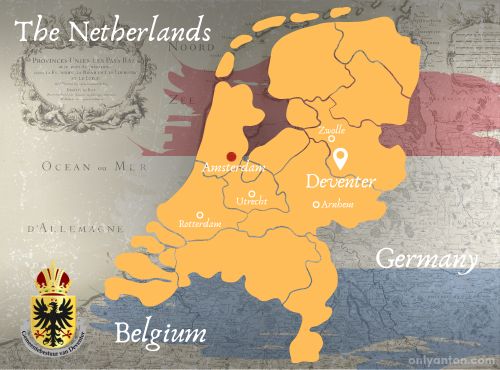
Finding Deventer on the Map
So, where exactly is Deventer? This historic Dutch city lies in the province of Overijssel, in the eastern part of the country. It’s perched on the eastern bank of the IJssel River, one of the Netherlands’ major distributaries of the Rhine. Deventer is roughly equidistant from Zwolle to the north and Arnhem to the south, both of which are better known to most travellers. It’s also not far from the German border, making it a convenient stop for those crossing into the Netherlands by road or rail. Thanks to its excellent rail connections, Deventer can easily be reached from Amsterdam in under two hours.
Why Make a Stop in Deventer?
Despite its modest size and relative anonymity on the tourist map, Deventer has much to offer. It’s a city with medieval bones, a humanist legacy, and a relaxed pace that invites exploration. For those willing to veer off the well-trodden path, Deventer rewards with quiet charm, riverside beauty, and just enough historical intrigue to make you linger longer than expected.
Deventer Through the Ages: A Brief History
A Hanseatic Trading Power
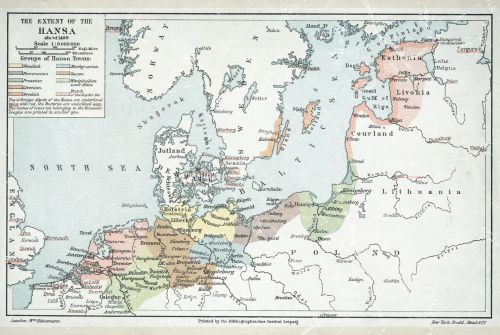
Deventer is one of the oldest cities in the Netherlands, with a history that stretches back over a thousand years. Its origins date to the 8th century, when the Anglo-Saxon missionary Lebuïnus founded a church on the banks of the IJssel River. By the 10th century, Deventer had become an important commercial hub, thanks to its strategic riverside location. During the Middle Ages, the city flourished as a member of the Hanseatic League—a powerful network of trading cities across Northern Europe. Its bustling markets, thriving book trade, and vibrant economy earned it a reputation as a prosperous and influential town.
Surviving the Centuries
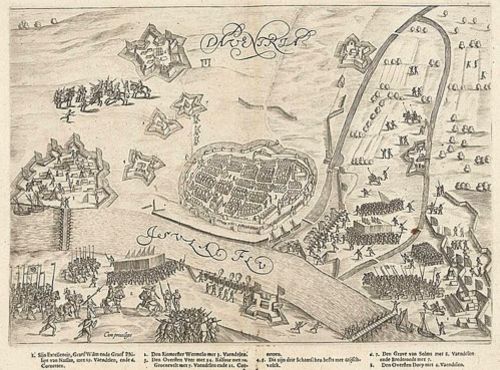
Over the centuries, Deventer has weathered its share of hardship. It has endured frequent flooding from the IJssel River. The city has been occupied during multiple conflicts, including the Eighty Years’ War and World War II. It has experienced periods of economic decline. Yet the city has always proven resilient, rebuilding and reinventing itself while preserving its historical character. Much of the medieval city center remains intact, with cobbled streets, gabled façades, and a skyline punctuated by church towers.
A Living City with a Historic Soul
Today, Deventer strikes a charming balance between past and present. It’s a living, working Dutch city—less polished than tourist-heavy destinations like Amsterdam or Utrecht, but all the more authentic for it. Locals cycle through the old town past 15th-century buildings. Outdoor cafés fill with residents enjoying bitterballen and beers. There’s history around every corner and a sense of everyday life carrying on undisturbed. Deventer offers a compelling and rewarding detour for travellers looking to experience a quieter, culturally rich side of the Netherlands.
Top Things to Do in Deventer
Though compact and easily walkable, Deventer is packed with historic charm and cultural landmarks. A day exploring its cobbled streets reveals a city layered with stories—from medieval trade and religious heritage to humanist scholarship and sweet culinary traditions.
Binnenstad (Old Town)
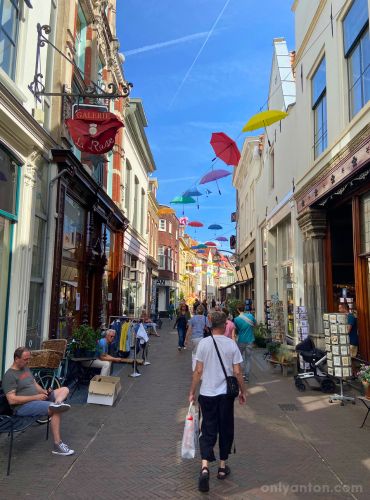
The historic center of Deventer, known as the Binnenstad, is a delight to wander. Gabled buildings, boutique shops, and cozy cafés line its narrow, cobbled streets. The architecture tells a story of centuries past, with well-preserved façades and unexpected flourishes. The Binnenstad is the city’s beating heart, where locals go about their lives against a backdrop of timeless beauty. Be sure to look up. You’ll spot old guild signs, stepped roofs, and occasionally a cheeky sculpture peering down from above.
Lebuïnuskerk
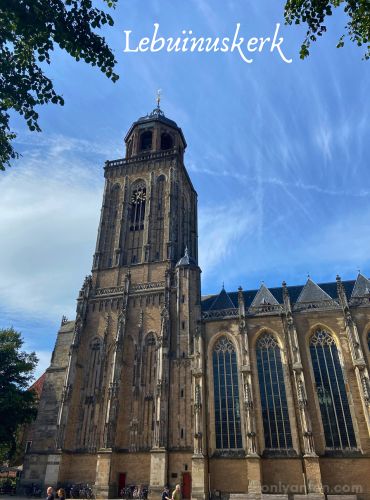
Dominating the skyline is the Lebuïnuskerk, an imposing Gothic church named after the 8th-century missionary who founded Deventer. Towering over the market square, the church is a striking symbol of the city’s religious and architectural history. Step inside to admire its vaulted ceilings, ornate organ, and centuries-old gravestones embedded in the floor. Climb the tower for panoramic views of the city and the winding IJssel River.
De Markt & Wilhelmina Fountain

Deventer’s central market square is a lively gathering place. The area is ringed by historic buildings and full of energy, especially on market days. The Wilhelmina Fountain, dedicated to Queen Wilhelmina, adds a touch of regal charm to the scene. It’s the perfect place to pause with a coffee and watch the world go by. Or chat with locals stocking up on cheese, flowers, and fresh produce.
Museum de Waag
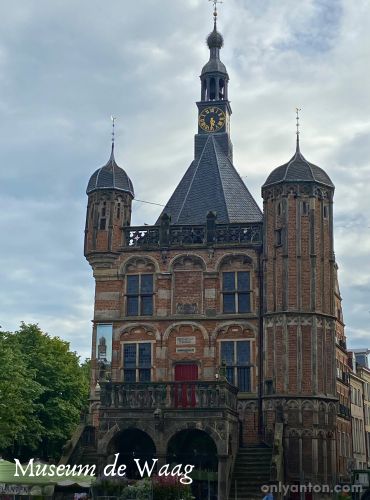
This historic weighing house, one of the oldest in the Netherlands, now serves as Deventer’s main museum. The Museum de Waag offers a compelling glimpse into the city’s Hanseatic past, civic life, and notable residents. One of its more intriguing exhibits includes a forged Vermeer by Han van Meegeren, once hailed as a rediscovered masterpiece. The museum’s setting in a 16th-century building only adds to its character.
Bussink Bakery
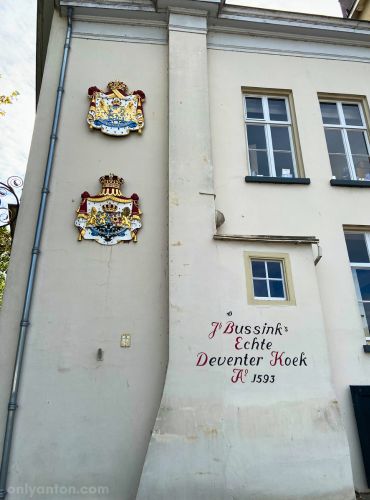
No visit to Deventer is complete without sampling its most famous delicacy: Deventer koek. This spiced rye cake has centuries of tradition behind it. The best place to try it is the iconic Bussink Bakery. The sweet aroma of centuries-old recipes still lingers in the air. It’s part of the city’s identity and a tasty souvenir to take home or eat on the spot.
Het Huis van Deventer (The Former Latin School)
Beside the Lebuïnuskerk is a remarkable building with a quietly profound legacy: the former Latin School where Erasmus once studied. When I visited, it was a boutique hotel called Hotel in het Huis van Deventer. It offered guests the unique opportunity to sleep beneath the same roof where one of Europe’s greatest humanists began his intellectual journey. A stained-glass image of Erasmus greeted me at the entrance—an unexpected delight.
Note: As of 2025, the hotel appears to have closed or been rebranded. While it may no longer function as a hotel, the building’s historical significance remains. It is well worth viewing from the outside during your visit to the city.
Optional Mentions
- Speelgoedmuseum (Toy Museum): A fun, nostalgic detour with an impressive collection of antique toys and games.
- Saint Nicholas Church: A modest but historically significant church reflecting Deventer’s medieval ecclesiastical landscape.
- Stadhuis (Town Hall): A blend of Gothic and modern architecture, still in use as the city’s municipal center.
- Wilhelminabrug: This steel arch bridge was famously used as a stand-in for Arnhem in the film A Bridge Too Far.
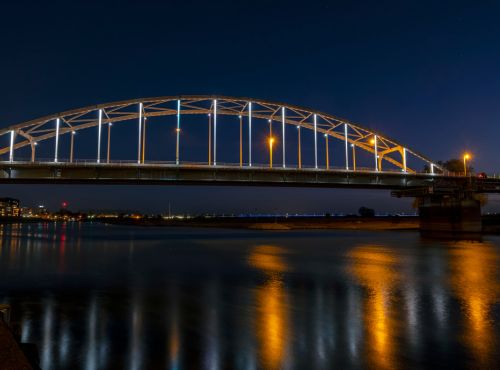
From churches and cobblestones to sweet treats and secret stories, Deventer’s sights reveal a city proud of its past and quietly alive in the present.
Erasmus in Deventer: A Look at His Humanist Legacy
Deventer may be a quiet city today, but it once played a formative role in the life of one of Europe’s greatest thinkers—Desiderius Erasmus of Rotterdam. For those interested in philosophy, education, or European history, walking in Erasmus’s footsteps adds a deeper resonance to any visit.
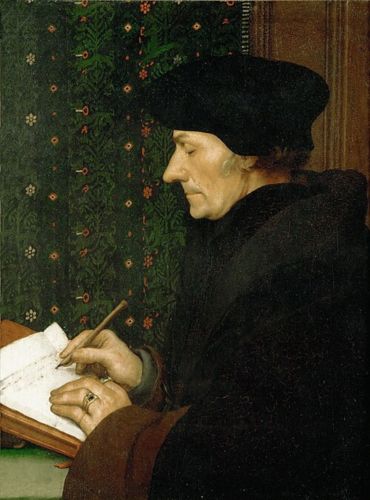
Who Was Erasmus?
Born in 1466, Erasmus was a Dutch philosopher, Catholic priest, and one of the most influential humanist scholars of the Renaissance. He championed education, critical thinking, and religious reform, favouring reasoned dialogue over dogma. His most famous work, In Praise of Folly, remains a biting and witty critique of church corruption and intellectual laziness. Erasmus laid the intellectual groundwork for both the Reformation and modern humanist thought, though he himself never broke from the Catholic Church.
His early education occurred in Deventer, where he attended the Latin School connected to the Brethren of the Common Life. This reform-minded religious movement emphasized piety, community living, and education. The curriculum here exposed Erasmus to classical Latin authors, early Christian writings, and a disciplined approach to study that would shape his intellectual path. The building still stands today. For a time, it operated as Hotel in het huis van Deventer, a uniquely fitting accommodation for the curious and historically inclined. While it no longer functions, its historical significance endures.
Why He Matters
Erasmus’s influence extended far beyond the Netherlands. He helped shape the Northern Renaissance, advocated for translations of the Bible into vernacular languages, and corresponded with leading figures of his age. His emphasis on returning to original texts and on education as a means of moral and spiritual improvement marked a turning point in European intellectual life. He was a bridge between the medieval world and the modern age—skeptical but faithful, scholarly yet accessible.
Personal Reflection: A Night in Erasmus’s School
When planning my stopover in Deventer, I booked a room at Hotel in het huis van Deventer primarily for its location. It was centrally situated and appeared to be near the old Latin School where Erasmus once studied. I thought I might at least walk past the building during my short stay. I hadn’t realized—until I arrived and looked up at the stained-glass portrait of Erasmus above the entrance—that I had inadvertently booked a room in the Latin School itself.
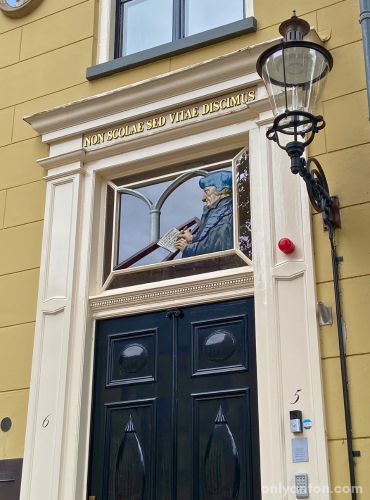
The hotel was spartan. No television, no minibar, no central air. The bathroom was a bare, practical space: an open shower with no curtain, a small water closet, and a squeegee to mop the wet tile afterward. The room’s balcony overlooked an inner courtyard, where a shallow garden bed held not flowers but moss and lichen, quietly thriving in the shade.
The Takeaway
For some travellers, this might have felt like a disappointment. For me, it was a gift. I’ve always had a fondness for moss and lichen—their quiet resilience, their unassuming beauty. And the minimalist room, far from feeling austere, seemed instead to echo the monastic simplicity of an earlier time. It allowed space for quiet thought. I imagined Erasmus as a student here, his world shaped not by amenities or distractions, but by books, ideas, and discipline.
This lack of modern comforts had an unintended benefit: it pushed me outside. I wandered through the square in front of the Lebuïnuskerk, stopping for bitterballen and a biertje (a glass of beer) at one of the cafés nearby. Later that evening, I stumbled upon Het Glas in Lood. In this small local pub, the owner—married to a Lithuanian woman—served homemade Kepti Cepelinai, hearty potato dumplings filled with minced pork. The pub was cozy, full of conversation and board games, and it felt like I had tapped into the city’s rhythm—unhurried, rooted, and quietly alive.
Staying where Erasmus once studied didn’t just check a historical box—it deepened my connection to Deventer. It reminded me that travel isn’t always about major landmarks or bucket-list destinations. Sometimes, it’s about pausing in the places that shaped the minds of those who shaped the world, and allowing their quiet influence to linger just a little while longer.
What to Eat in Deventer: Traditional Flavours and Surprises
Food may not be the first thing that comes to mind when thinking of Deventer, but this historic city has a few culinary cards up its sleeve. From centuries-old spice cake to comforting Dutch bar snacks, Deventer offers a mix of heritage, heartiness, and the occasional surprise.
Deventer Koek: A Slice of History
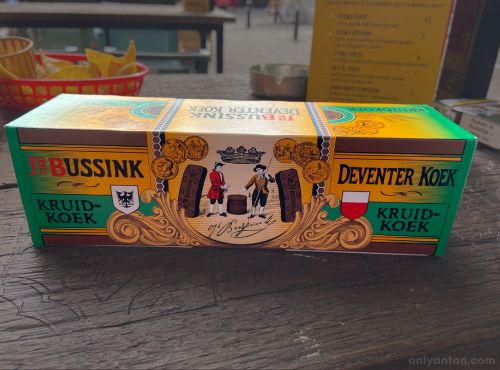
No visit to Deventer is complete without trying the city’s signature treat: Deventer koek. This spiced rye cake has been baked in the city for centuries—records mention it as far back as 1593. Traditionally made with rye flour, honey, and a mix of warming spices like cloves, cinnamon, and nutmeg, Deventer koek is dense, dark, and richly aromatic. It’s often served in thin slices and pairs beautifully with a hot cup of tea or coffee. Bussink, the most iconic bakery in town, has been producing this beloved cake since 1593, and its shop near the market square is the best place to sample it fresh.
Dutch Comfort Foods

Deventer also offers the hearty staples that Dutch cuisine is known for. You’ll find classic bitterballen and kroketten—crispy, deep-fried morsels with a creamy meat filling—on almost every café menu. Frites with fritesaus (a tangy, mayonnaise-based sauce) are another must-try street snack, though they’re just the beginning when it comes to sauce options. In addition to the classic, you may also find mustard sauce, curry ketchup, garlic sauce, or Andalouse sauce (a tangy blend with pepper and tomato).
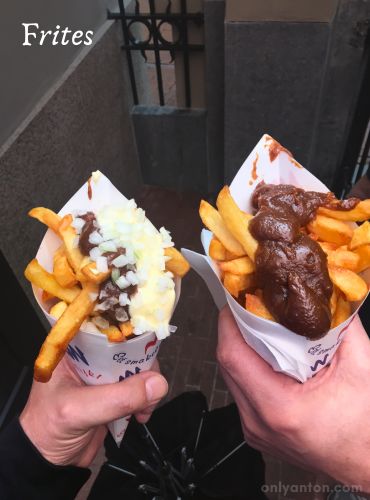
At some snack bars, the offerings are more adventurous. You might encounter Joppie sauce, a sweet and curried mayo, or Satésaus, an Indonesian-style spicy peanut sauce—a nod to the Netherlands’ colonial culinary legacy. For the truly curious, there’s Patatje Oorlog (“fries at war”), a messy, delicious collision of satay sauce, mayonnaise, and chopped raw onions. It may not be elegant, but it’s a beloved guilty pleasure.
The uitsmijter—a generous open-faced sandwich topped with eggs, cheese, and sometimes ham—is a reliable and satisfying option for breakfast or lunch.
Local Beers to Try
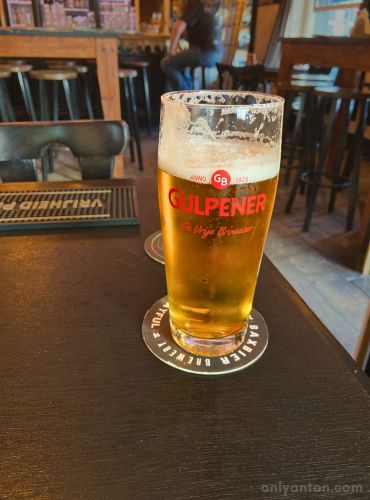
To wash it all down, you’ll find an excellent selection of Dutch and Belgian beers. Brands like Gulpener, Davo, Affligem, and Hertog Jan are widely available and offer easy-drinking options with regional character. Whether you prefer a malty dubbel or a crisp blond, there’s likely a local beer on tap to match your palate.
An Unexpected Find: Lithuanian Kepti Cepelinai
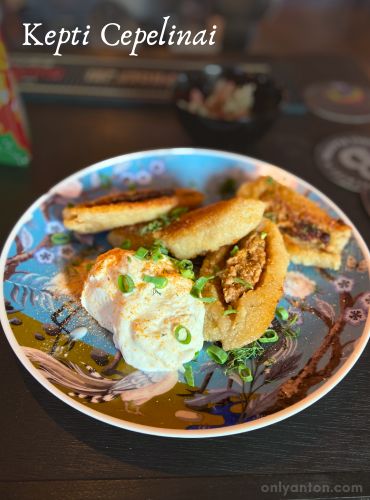
The biggest culinary surprise of my visit came at Het Glas in Lood, a cozy local pub tucked away near the Lebuïnuskerk. There, I was treated to a Lithuanian specialty: Kepti Cepelinai—pan-fried potato dumplings filled with minced pork. The dish, made by the owner’s Lithuanian wife, was delicious, hearty, and utterly unexpected. It was a delightful reminder that global flavours sometimes make a quiet home even in a traditional Dutch town. [https://cafehetglasinlood.nl/]
How to Visit Deventer: Tips, Transport, and Cultural Insights
Though less well-known than cities like Amsterdam or Utrecht, Deventer is easy to reach and even easier to enjoy. Its walkable historic core, friendly atmosphere, and relaxed pace make it an ideal stop for travellers seeking a more intimate Dutch experience.

Getting There
Deventer is well-connected by train, making it an accessible destination from nearly anywhere in the Netherlands. Regular trains run from Amsterdam (approximately 90 minutes), Utrecht (about an hour), and nearby cities like Zwolle or Arnhem (roughly 20–30 minutes). If you’re arriving by car, Deventer is conveniently located near the A1 motorway, which connects Amsterdam to the German border. There’s also a regional bus network, though the train is typically faster and more comfortable.
Getting Around
Once you’ve arrived, there’s little need for public transportation. One can easily explore Deventer’s compact city centre on foot. Most of the key sights—including the Lebuïnuskerk, De Markt, and Museum de Waag—are within a short walk of each other. Bicycles are, of course, available to rent and are a pleasant option if you’re staying longer or want to explore the outskirts, but they’re by no means essential for short stays.
Best Time to Visit
Summer is an excellent time to visit, especially on market days when the town square comes alive with local vendors, fresh produce, and Dutch gezelligheid. Autumn is another charming season to explore Deventer, as the crisp air and turning leaves add to the town’s cozy, timeless atmosphere. If you prefer fewer crowds, spring and early autumn offer the best balance of weather and tranquillity.
Cultural Etiquette

Dutch culture is famously direct but friendly. Basic phrases like dank je wel (thank you) and goedemorgen (good morning) go a long way. Tipping is appreciated but not obligatory—rounding up the bill or leaving 5–10% in restaurants is common. Most importantly, embrace the local sense of gezelligheid—that warm, convivial feeling of being relaxed, welcomed, and at ease in good company.
Conclusion: Why You Should Visit Deventer
Deventer may not appear on every traveller’s radar, but that’s precisely what makes it special. With its rich history as a Hanseatic trading city, atmospheric old town, and vibrant yet unpretentious culture, Deventer offers a grounded and authentic Dutch experience. It’s a place where daily life unfolds against medieval architecture, and simple pleasures, like a slice of Deventer koek or an evening pint in a cozy pub, feel especially rewarding.
For me, this short stopover became an unexpected highlight of my trip. What began as a practical break between cities transformed into a thoughtful encounter with Dutch heritage and humanist history. Staying in the very building where Erasmus once studied, exploring cobbled streets, and enjoying Lithuanian dumplings in a hidden corner bar reminded me why detours are often the most memorable parts of travel.
If you’re looking for a quieter kind of adventure—one shaped by stories, flavours, and moments rather than checklists—consider spending a day or two in Deventer. It won’t try to impress you. This city doesn’t need to. It just invites you in.
What About You?
Have you explored any hidden gems in the Netherlands? Would you like to walk the same streets where Erasmus once studied? What lesser-known European cities are on your travel wish list? Share your thoughts in the comments below—and don’t forget to check out other off-the-beaten-path stories on the Only Anton travel blog for more inspiration.
Further Reading and Resources
Related Posts on Only Anton
- Nijmegen’s Four Days Festival: Discover the magic of Nijmegen’s Four Days Festival and experience a celebration of walking, music, and culture.
- The Best of Den Bosch: A Guide to ‘s-Hertogenbosch: Discover the best of Den Bosch, a hidden gem in the Netherlands. Explore medieval charm, Bosch’s art, and local treats like Bossche Bollen.
- Discovering Ghent: Belgium’s Overlooked Medieval Gem: Uncover Ghent’s medieval charm, vibrant culture, and culinary delights for an authentic Belgian experience.
- Aachen Travel Guide: Explore Aachen, a hidden European gem with rich history, unique cultural experiences, and vibrant culinary traditions.
External Resources
- Visit Deventer – Official Tourism Site: Plan your visit with official information on events, attractions, and accommodations in Deventer.
- Museum de Waag: Learn more about the history of Deventer and browse current exhibitions at the city’s landmark museum.
- Bussink Deventer Koek: Discover the history behind Deventer’s famous spice cake and order traditional koek online.
- Erasmus Biography – Britannica: A reliable overview of the life and legacy of Desiderius Erasmus.
- Het Glas in Lood: A cozy game café in Deventer offering a unique blend of Lithuanian comfort food, an extensive selection of beers and whiskies, and a welcoming atmosphere with over 500 board games. Known for its homey vibe and cultural fusion, it’s a favourite spot for locals and visitors.




